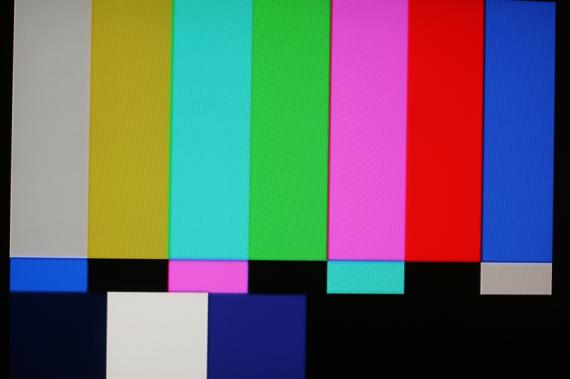Germanics courses in English, 2014-15
AUTUMN 2014:
German 275A: Crime Scenes: Investigating the Cinema and its Cultures
Cross-listed with Scandinavian Studies (SCAND 275A) and Comparative Literature (C LIT 270A)
Instructors: Eric Ames and Andy Nestingen
Acts of violence and mysterious motives have fascinated cinema audiences for more than a century. This introduction-to-film course gives you a set of tools for investigating and writing about the cinema.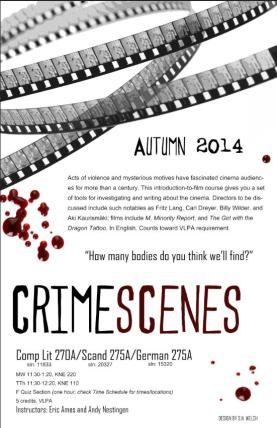
German 295A: Modern European Jewish Thought and Writing
Cross-listed with Jewish Studies (JSIS C 295A), Comparative Literature (C LIT 250A), Comparative History of Ideas (CHID 270C)
Instructor: Richard Block
What does it mean to seek equal status as a citizen when the primary marker of one’s identity, that of being Jewish, is indicative of a dream to return to Zion? How does one demand of the other, the Jew, that (s)he become German, French or English when the very notion of such nationalisms is vague, uncertain, and forever changing? These are the primary questions that will structure our discussions during the term. We will also be interested in the tragic trajectory that proposed solutions to these problems assumed. In other words, we will seek to understand why for Jews the eventual solution to their predicament in Europe was to abandon dreams of assimilation and argue for the birth of a Jewish state.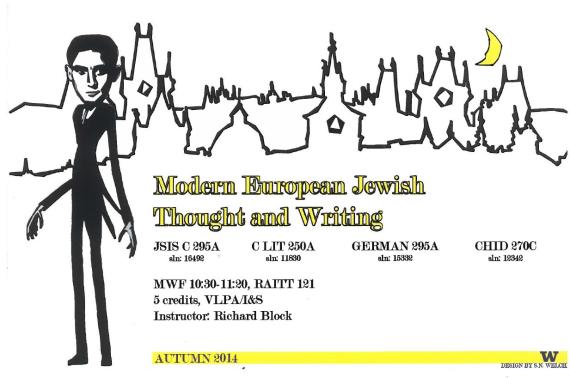
WINTER 2015:
German 371A: Film Noir
Cross-listed with Comparative Literature (C LIT 303A)
Instructor: Eric Ames
The term film noir was coined in 1946 by a French film critic who, when viewing a number of recently imported American films (The Maltese Falcon, Double Indemnity, Laura, and others), described them all as noir or “black,” referring not only to their stylistic features (deep shadows, claustrophobic settings) but also to the existentially bleak and morally ambiguous vision that seemed to unite the films. This course asks, how and when did film noir become a genre, and what does it mean to call it that? Where does genre come from? How does it originate? Who makes it? And how does it change over time? This year, the course is partnering with the Seattle International Film Festival for a series of special events! During the week of February 12-16 students will attend part of the “Noir City Film Festival” at SIFF Cinema Uptown.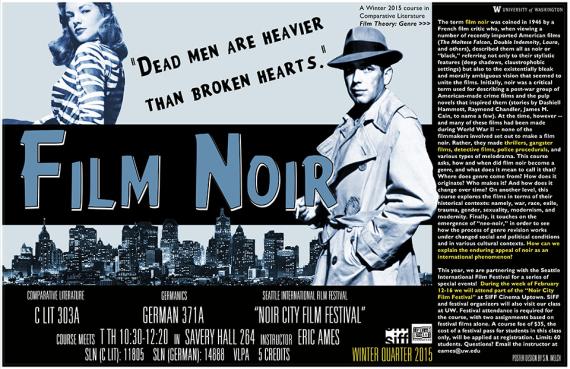
German 390A: The Tele-Novel: Seriality and Visual Storytelling
Cross-listed with Literature (LIT 298A), Comparative Literature (C LIT 357A), Communications (COM 495E)
Instructor: Ellwood Wiggins
In this course we will examine three television serials that transcend the common practice of episodic TV entertainment and aspire on a variety of levels to the complexity and import of great literature: Heimat, The Wire, Battlestar Galactica. These sweeping works of visual fiction are conceived not as endless serials, but as stories with a beginning, middle, and end. In addition to identifying the marks of aesthetic practices that are unique to this genre, we will address the social, political, and ethical issues raised in novel ways by the shows. We will begin the course with forays into traditional genres that have influenced the form and content of the Tele-Novel. Shakespeare’s history plays, Homer’s oral epics, and Dickens’s serialized novels can be read as vying prototypes and templates for both the collaborative creative processes and the finished episodic wholes of the Tele-Novel. In addition to viewing multiple episodes of the TV shows under discussion, we will also read articles in the history and theory of television.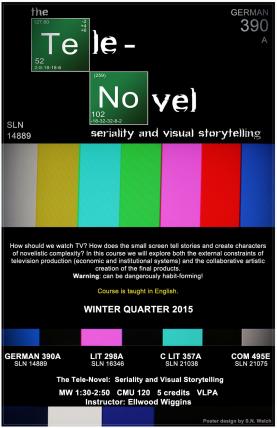
*All cross-listed courses are taught in English.
**Posters designed by S.N. Welch
